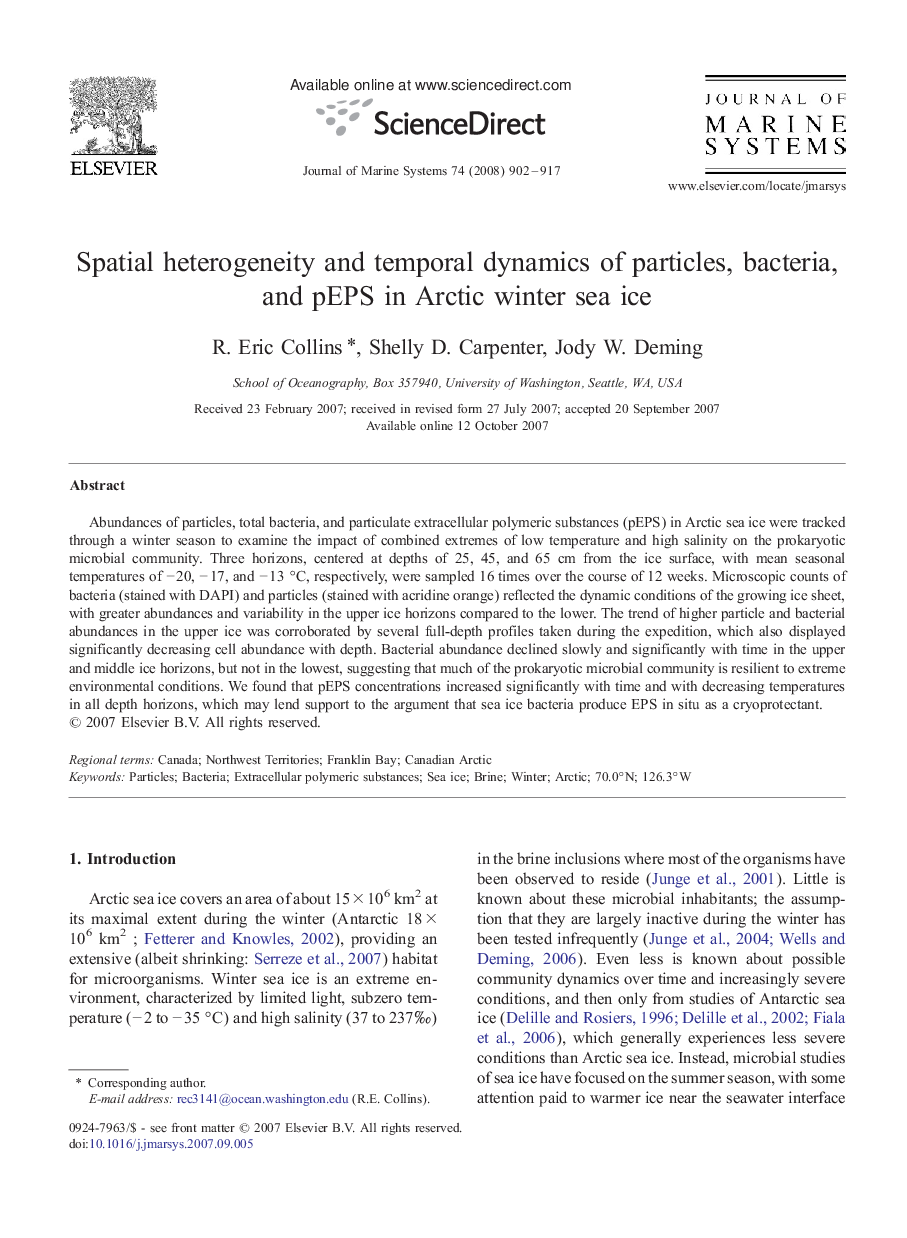| Article ID | Journal | Published Year | Pages | File Type |
|---|---|---|---|---|
| 4548769 | Journal of Marine Systems | 2008 | 16 Pages |
Abundances of particles, total bacteria, and particulate extracellular polymeric substances (pEPS) in Arctic sea ice were tracked through a winter season to examine the impact of combined extremes of low temperature and high salinity on the prokaryotic microbial community. Three horizons, centered at depths of 25, 45, and 65 cm from the ice surface, with mean seasonal temperatures of − 20, − 17, and − 13 °C, respectively, were sampled 16 times over the course of 12 weeks. Microscopic counts of bacteria (stained with DAPI) and particles (stained with acridine orange) reflected the dynamic conditions of the growing ice sheet, with greater abundances and variability in the upper ice horizons compared to the lower. The trend of higher particle and bacterial abundances in the upper ice was corroborated by several full-depth profiles taken during the expedition, which also displayed significantly decreasing cell abundance with depth. Bacterial abundance declined slowly and significantly with time in the upper and middle ice horizons, but not in the lowest, suggesting that much of the prokaryotic microbial community is resilient to extreme environmental conditions. We found that pEPS concentrations increased significantly with time and with decreasing temperatures in all depth horizons, which may lend support to the argument that sea ice bacteria produce EPS in situ as a cryoprotectant.
